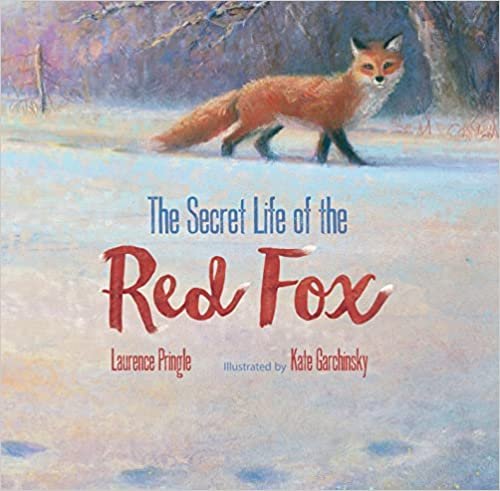An-Animal-a-Month: Foxes
Foxes – read all about the cat-like members of the dog family in these newer nonfiction and informational fiction titles.
What happens when an animal dies? This story tenderly bears witness to the end of a life cycle when a mother fox is killed by a car. Through lyrical language and evocative illustrations, we see her body transform back into the building blocks of life via myriad decomposers. As the seasons pass, new life springs forth from the building blocks she left behind. The take-home message – death is both an end and a beginning. Readers and listeners may cry (I did) but will come away with important information that helps demystify death and provides a new perspective. Ages 5-8.
Kind of nonfiction: I’m thinking of this as expository literature – a narrow focus with carefully crafted language and structure. It’s told in the first person and ends back where it began – a circular ending. I noticed that while the Denver library shelved it as nonfiction, another Colorado library shelved it as fiction. Either way, this book shares true information about the ways of foxes, death, decomposition, and the building blocks of life.
Ties to Next Generation Science Standards:
5-LS2-1 (develop a model describing the movement of matter among plants, animals, decomposers, and the environment) – The text shows matter moving up the food chain from plant to herbivore to carnivore, and then back to the environment via scavengers and decomposers. The back matter more fully explains how the process works and gives more examples of decomposers. Another book that shares similar information with a less emotional story is Whale Fall Cafe by Jacquie Sewell ( see my November blog post).
3-LS1-1 (develop models to describe that organisms have unique and diverse life cycles but all have in common birth, growth, reproduction, and death) – Before her death, the mother fox in this title rears a litter of kits, showing birth, growth, reproduction, and death. This life cycle, with stages typical of a mammal, could be compared and contrasted with those of insects like monarch butterflies and amphibians like frogs.
1-LS1-2 (describe patterns of behavior of parents and offspring that help offspring survive) – In the text, we see the mother fox teaching her kits to hunt, and watch as they play, which helps prepare them for hunting. By the time their mother passes, the kits are able to survive on their own.
Eye to eye with red foxes! Intimate photographs paired with two layers of text, and an engaging structure, transport the reader/listener into the red fox’s world. As children learn when, where, and how to look and listen for these adaptable creatures, they come to know about the fox’s habitats, diet, physical traits, communication, and more. This book is as enchanting as the animal it portrays. It reminds me of another beautifully photographed book, Step Gently Out, by Helen Frost and Rick Lieder. Ages 4-8.
Kind of nonfiction: Expository Literature – carefully crafted language, structure, and a tight focus are hallmarks of this kind of nonfiction. (My categorization using Melissa Stewart’s 5 Kinds of Nonfiction.)
Join the hunt! Little red fox is hungry and goes searching for a meal. He must be careful though, for even predators can become a meal for other predators.
When a library search revealed a fox book by Jonathan London, I was eager to read it. I’ve enjoyed several of his many animal books. I was surprised to find this one is fictional, based on the poem “Foxalito” by Gene Berson. Though it’s not nonfiction, I chose to showcase it because the text is full of rhyme, rhythm, repetition, and evocative similes – all ingredients of a great read-aloud. Readers and listeners will glean a feeling for a fox’s life, including the need to hunt to satisfy hunger, fear of other predators, and how foxes go about hunting. I love the ending which contemplates what a fox might dream about, showing children that animals dream too. Ages 4-8.
Fiction: Based on the poem “Foxilto” by Gene Berson.
Do you know all the ways foxes are like cats? First, follow a vixen as she hunts, escapes a pack of dogs, meets up with her mate, and raises a litter of kits. Then, delve into the back matter that lists all the ways foxes, who are members of the dog family, are like cats. This may raise all kinds of questions about how animals are classified into families. Ages 6-9.
Kind of nonfiction: Narrative Nonfiction. This is a slice-of-life biography of a female red fox with subject-specific vocabulary and interesting facts woven in, plus unique back matter about how foxes are cat-like. (My categorization using Melissa Stewart’s 5 Kinds of Nonfiction.)
Red foxes are the most common and widespread species of fox. They are well-represented in different kinds of children’s nonfiction and informational fiction. However, there are more than twenty other species of foxes from the arctic fox to the fennec, Cape, and grey fox. You’ll find many traditional nonfiction titles such as Foxes (National Geographic Kids series) and Arctic Fox (Arctic Animals: Life Outside the Igloo series) that cover some of these species.




